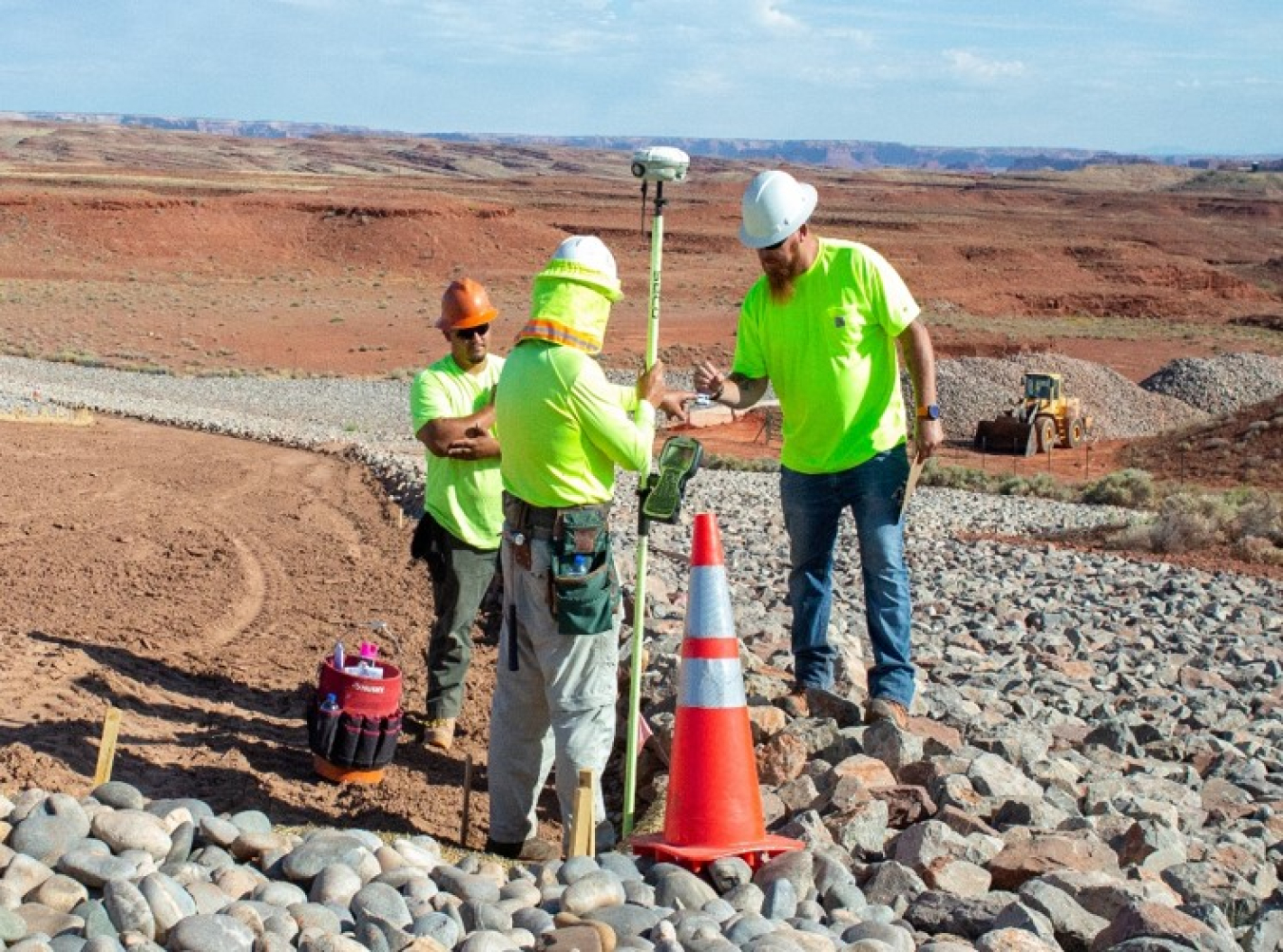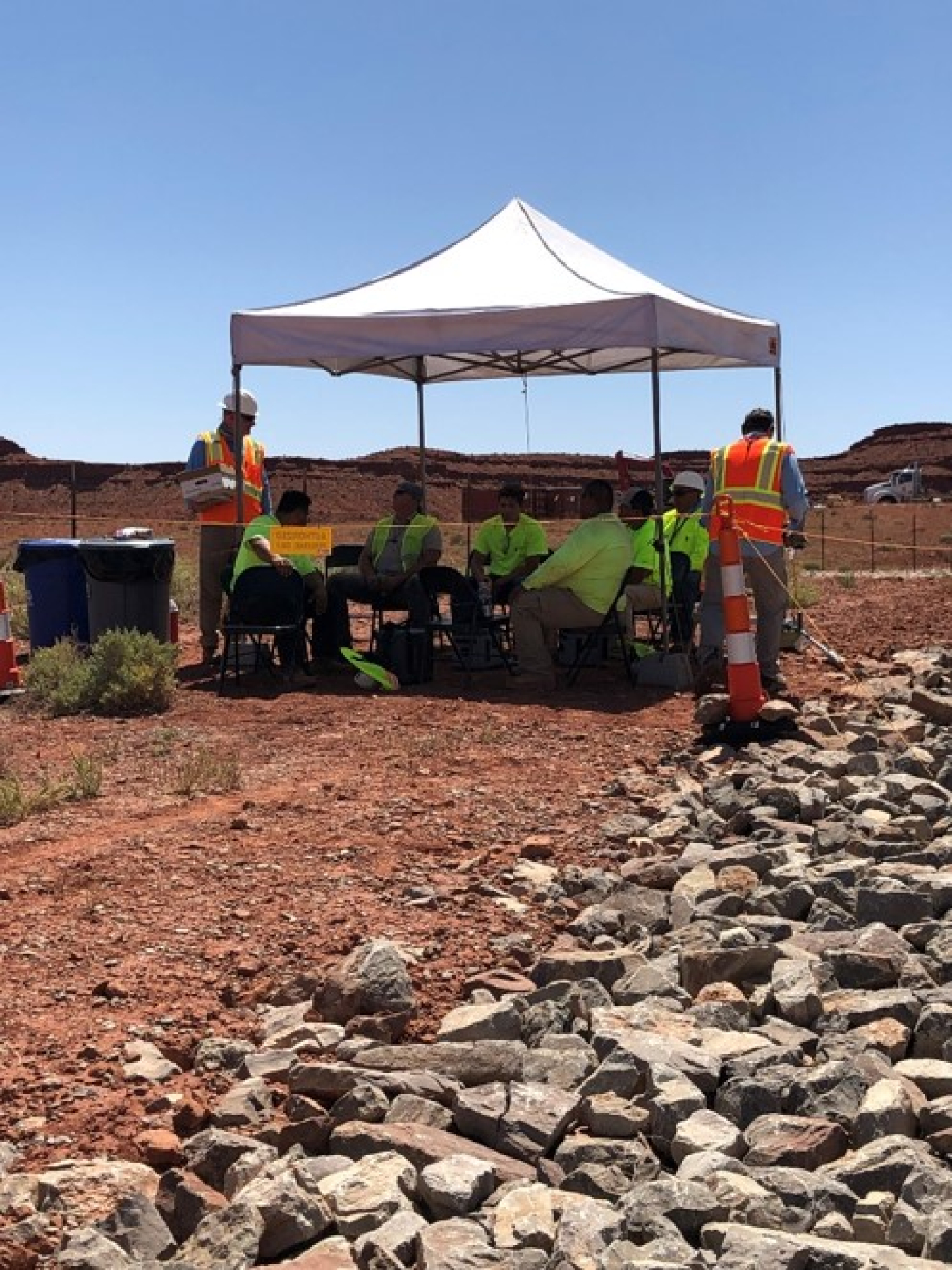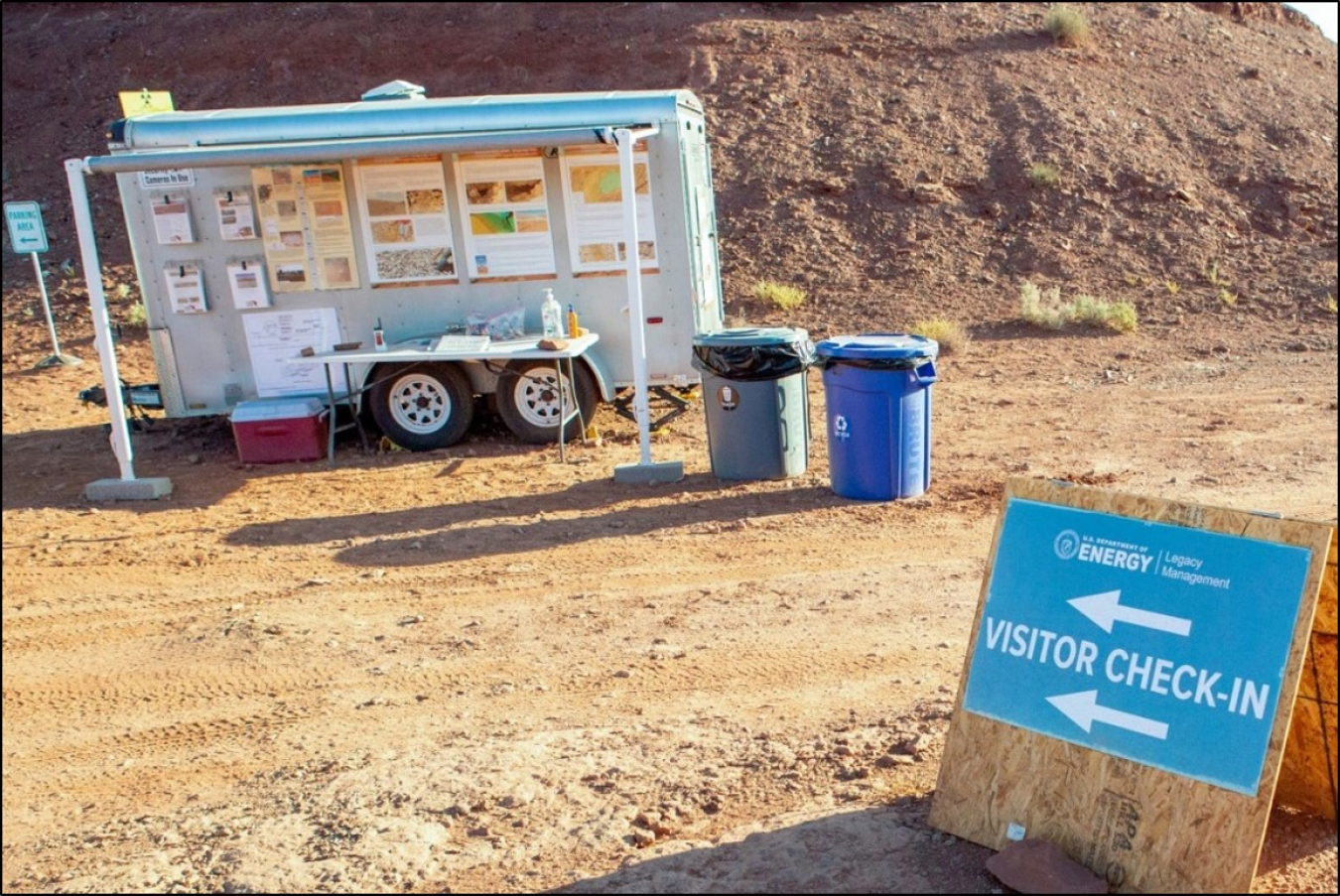A field project in Utah exemplifies LM’s commitment to safety.
July 30, 2020
An industrial hygienist monitors workers during LM’s Mexican Hat interim cover protection project for signs and symptoms of heat stress.
Named after the small, southeastern Utah town that lies a couple miles to its west, the Mexican Hat, Utah, Disposal Site — currently licensed to the U.S. Department of Energy (DOE) Office of Legacy Management (LM) for long-term stewardship — is located on the Navajo Nation, sitting just off U.S. 163 among rolling red sandstone. The Navajo community of Halchita, Utah, is also nearby. Those familiar with the region know that it is a well-traveled area, as thousands of tourist flock to the picturesque Monument Valley, located 26 miles down the road.
During an annual inspection of the Mexican Hat disposal cell in spring 2016, inspectors discovered several shallow depressions on the northeastern side slope of the cell. LM began investigations to determine the extent of these depressions and whether they indicated evidence of erosion of disposal cell components beneath the rock cover on the surface. Initial results indicated that the cell’s radon barrier, which prevents emission of radon gas, a byproduct of radioactive decay of uranium, was being impacted by erosive forces associated with runoff. These results prompted the development of plans to conduct further geotechnical investigation and perform interim repair of the lower portion of the northeast side slope.

One of multiple shade canopies that were utilized throughout the work area.
A team of experts including LM and Legacy Management Strategic Partner (LMSP) staff, working closely with Navajo Nation Abandoned Mine Lands/UMTRA staff and in communication with the Nuclear Regulatory Commission, collaborated on plans for more fully assessing disposal cell cover integrity and quickly addressing the observed impacts through the interim cover repair effort. To provide independent review and consultation for these initiatives, LM also directly engaged technical expertise from Desert Research Institute (DRI), a world leader in environmental research.
Months before work began in the field, extensive preparation and planning took place within LM and LMSP to ensure the planned work was executed safely. The planning process focused on mitigating hazards associated with the use of heavy equipment, visitor safety on an active and remote work site, and mitigation of heat-related hazards. Average daily temperatures in Mexican Hat during the month of August can reach well over 100 degrees Fahrenheit. The climate is very dry, and the site does not have any natural shade.
The planning team understood that enhanced hazard controls would need to be in place to combat the heat. Hazard controls included heat stress training and monitoring, shade canopies, and scheduled breaks. An industrial hygienist — responsible for monitoring heat and other safety concerns — was on-site during all work activities. A “buddy system” was established so that each member had another member of the team watching for any signs of heat stress. Cold water and electrolyte drinks were provided in multiple locations including work areas, observation areas, and break areas. Additional heat stress mitigation efforts included use of specialized protective clothing. Workers were provided lightweight, SPF-rated, high visibility T-shirts, SPF-rated sun buffs and cooling towels, and shade visors for vented hard hats. Sunscreen was also available at multiple locations. All heavy equipment with enclosed cabs, as well as project personnel vehicles, had air conditioning.

A work area control cargo trailer was part of the on-site safety measures during the project.
Mexican Hat is in a remote location, and medical facilities are hours away. Staff developed an emergency response plan specifically for the project in case medical responders would be called to the site. Satellite phones were also on-site to aid in the event of an emergency, due to the remote location and lack of reliable cell phone reception.
A cargo trailer became part of the on-site safety measures. The trailer was parked on the main access road to the work area and functioned as an access control point for the inner site and work areas. Upon arrival, visitors were alerted to stop and check in with project staff at the access control point to sign in on an accountability log, complete applicable work documentation, and don high visibility orange vests. Visitor access points to the work observation area were located separately from the point of access to the work zone, thereby reducing risks to both visitors and workers.
An air-conditioned office trailer was also staged adjacent to the worksite for workers to use for meetings and recovery from the hot temperatures. Also located in the mobile office were emergency response supplies, including a first aid kit and an automated external defibrillator. Multiple portable shade structures were staged in the work zone to provide relief from the hot August sun.
All staff were required to attend a morning safety briefing each day. The briefing included a safety discussion that reviewed daily work plans and reinforced worker awareness of heat stress hazards and the available controls to alleviate these hazards.
The project at Mexican Hat was accomplished safely and without incident, thanks to multiple levels of planning and collaboration between LM and its partners.
Learn more about LM’s Mexican Hat, Utah, Disposal Site.

